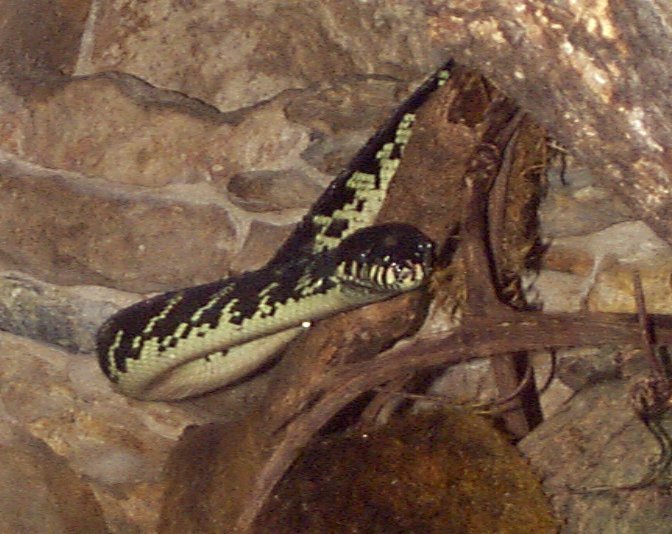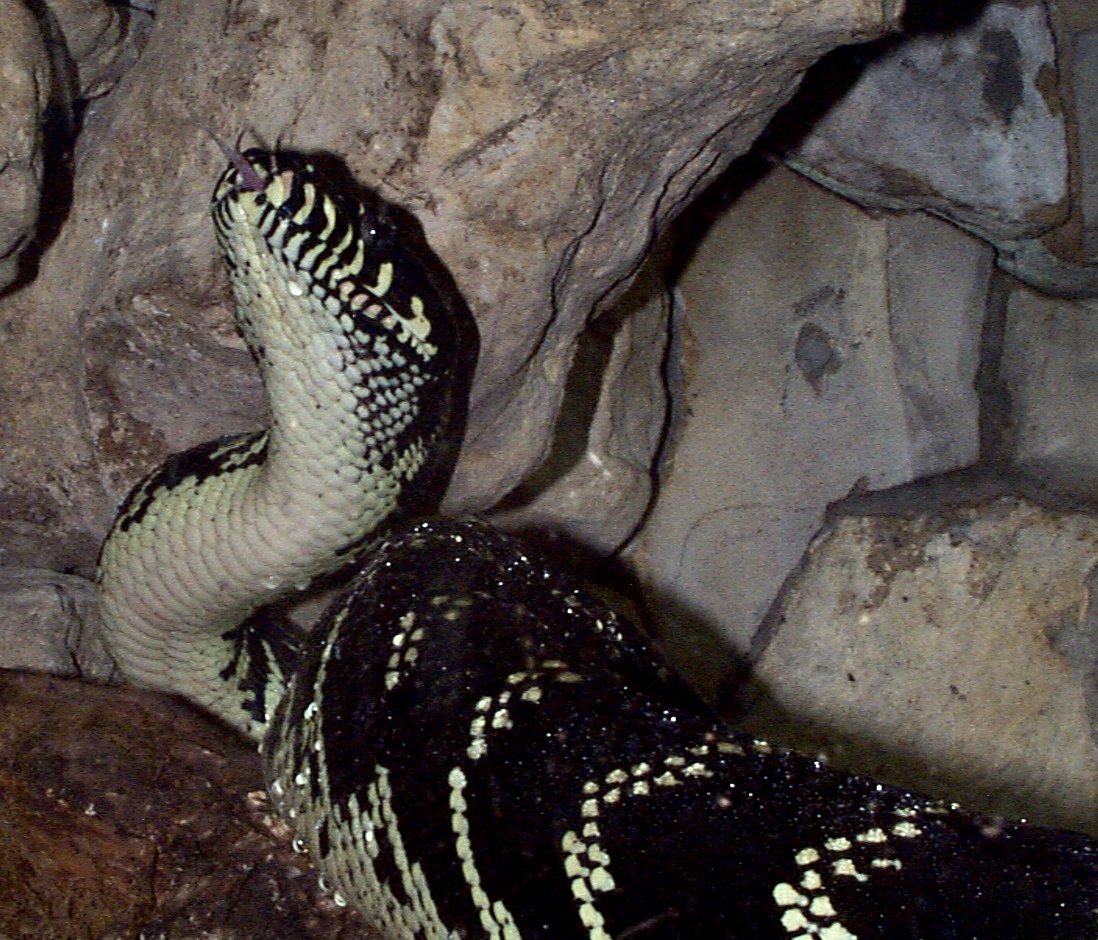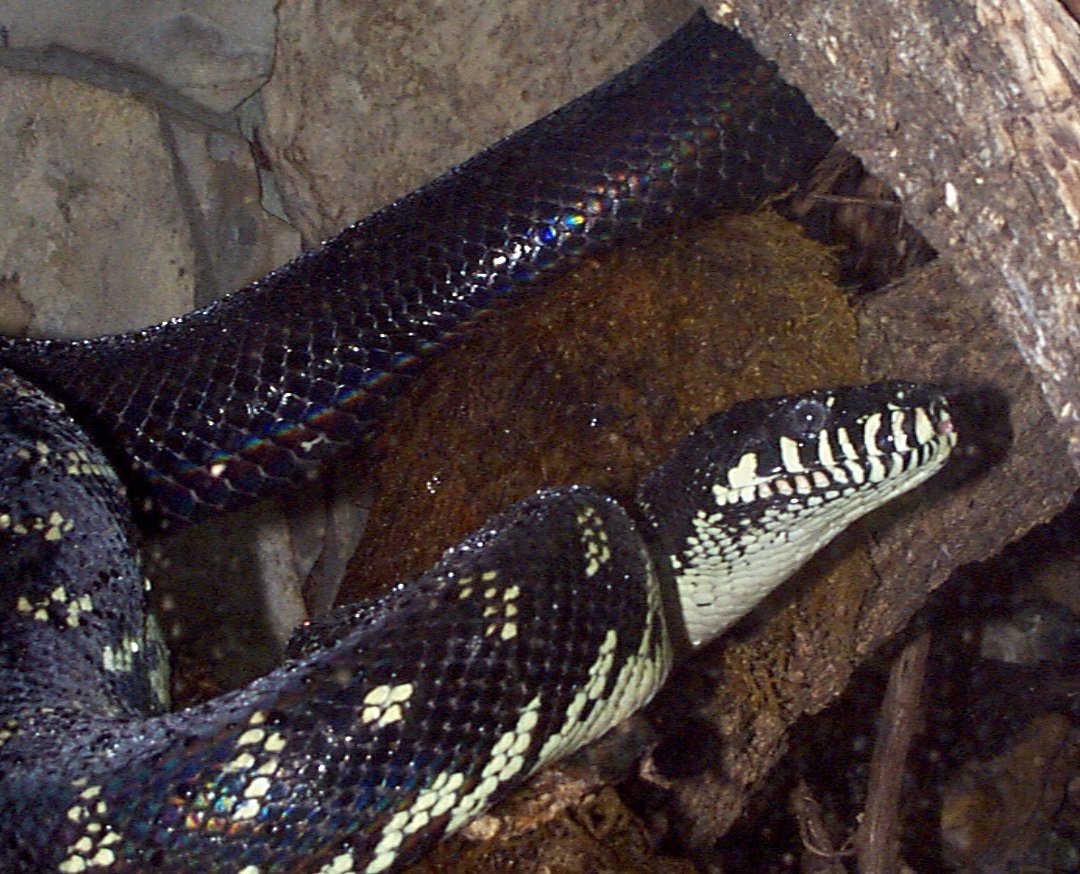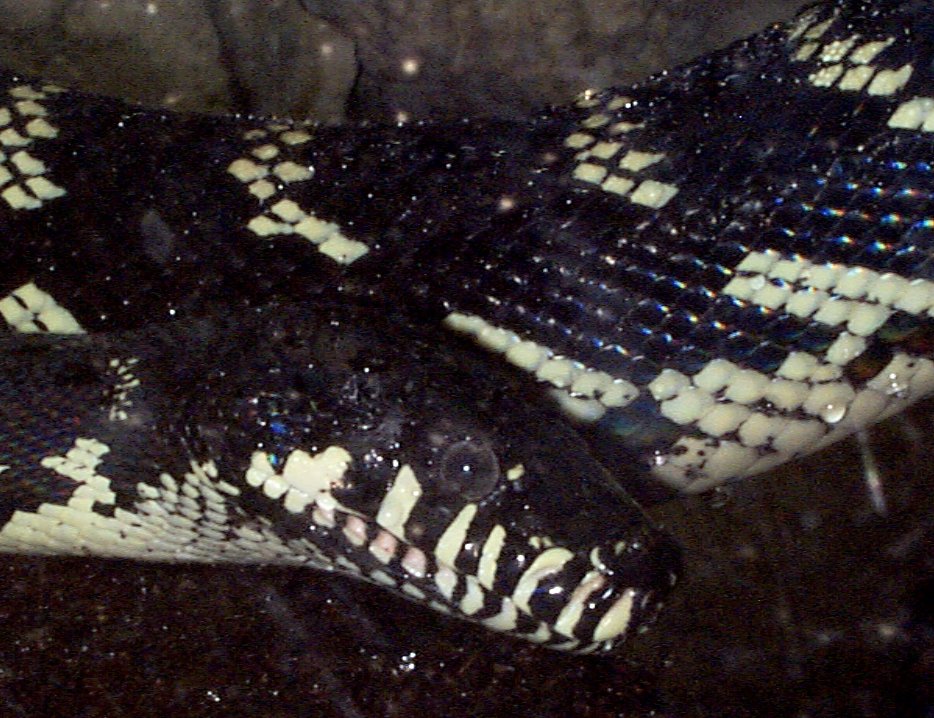|
|
|
 |
Scientific Name: Morelia boeleni |
| Geographical Range: Africa
(New Guinea) |
| Habitat: Rain forest,
grasslands and savannas, woodlands, and swamps |
| Diet in the Wild:
rodents, birds, lizards, monkeys, pigs, or antelope |
| Conservation Status:
Not protected. |
| Location in the Zoo:
Reptiles and Amphibians |
|
|
|
| Physical
Description:
A non-venomous snake that is on average 6-8 feet in length, the coloration
of this species is striking. The upper part of the snake is a shiny
black with a purple-blue iridescence. It has white, diagonal markings
on the lower part of its body which cover the first third of the snake,
white "bars" on its lips. Endemic to New
Guinea (it's found only there). It seems to favor
humidity and low light - almost nothing is known of its activities
in the wild. |
Social
Organization::
Order: Reptilia (Reptiles)
Family: Boidae
Subfamily: Pythoninae
Genus: 8 genera, including Python, Aspidites,
Morelia, and Antaresia
Species: 33 |
| Special
Adaptations:
Pythons are constrictors. They grab their prey with their teeth, and
then quickly wrap coils of their bodies around the prey and squeeze.
They donít actually crush the prey and break its bones, though. Instead,
they squeeze tightly so that the prey animal canít breathe and it
suffocates. The snake then begins the leisurely process of unhinging
its jaw and swallowing the prey whole, usually head first. This is
accomplished with rhythmic muscular contractions that pull the prey
down the snakeís throat and into its stomach. How the snake does breathe
while its mouth is full? It has a special tube in the bottom of its
mouth that stays open to one side to take in air. Like most snakes,
pythons donít chase after their prey. They are ambush hunters, remaining
still and hidden until a possible meal comes close. Then the python
strikes quickly to catch the prey. They use both sight and smell to
locate prey. Pythons also have an additional advantage: most have
special temperature-sensitive "pits, or holes, along their jaws
that can sense the heat of a nearby animal. This helps them find prey
even in the dark or among dense foliage. |

|
| Reproductive
Behavior:
Watchful Moms
Unlike their close relatives the boas, pythons lay eggs. Some species
lay them in a shallow nest or even cover them with leaves and soil.
But whatís really remarkable is that most python mothers stay coiled
around their eggs to protect them while they develop, and if the temperature
gets too cold, the mothers of larger species warm their eggs up by
"shivering.Ē This involves rhythmic contractions of the muscles
and is described as looking like the snake has the hiccups. Even though
snakes are ectodermic, the mother python can, amazingly, raise the
temperature of her eggs up a few degrees by doing this. It takes a
lot of energy, though, so she may not reproduce again for two to three
years as she gains back the weight she lost. After the eggs hatch,
she leaves and the babies are on their own.
|
The
Animal at the Zoo:
Boelenís Python features velvety scales
with an interesting iridescent glow.

|
| 
|
Page
Author:
Kimberly Austin:
kim42284@yahoo.com
Sources and Links:
http://www.sdzoo.com
http://www.worldwildlife.org
www.pythons.net
www.kingsnakes.com
|
| |
|



